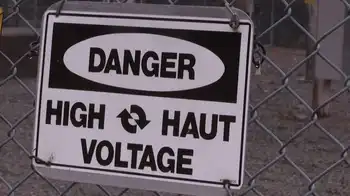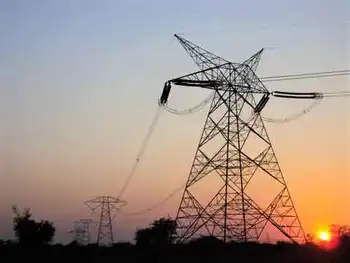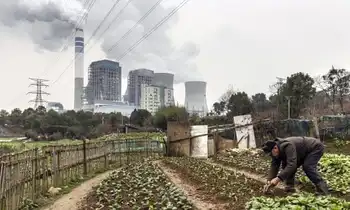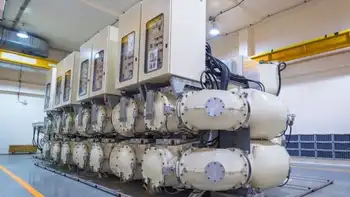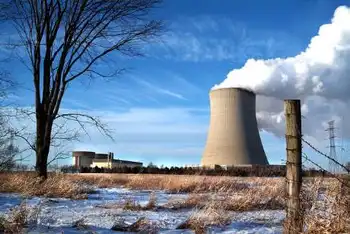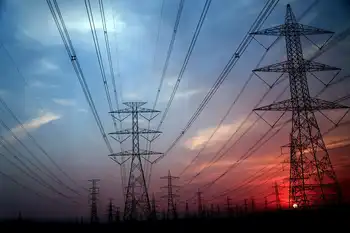Coal ash issue worries Great River Energy
By Bismarck Tribune
Electrical Testing & Commissioning of Power Systems
Our customized live online or in‑person group training can be delivered to your staff at your location.

- Live Online
- 12 hours Instructor-led
- Group Training Available
Christianson heads up byproduct development for Great River Energy, which operates coal-fired power plants near Underwood and Stanton.
The plants produce more than 1 million tons of coal waste every year, so it was good news recently when the federal Environmental Protection Agency said it will delay deciding whether the waste will be newly classified as hazardous.
If coal waste is determined to be hazardous, it will cost millions of dollars in the form of consumer electrical bills and taxpayers supporting more bureaucracy to manage the new rules.
The hazardous designation would impact big power plant operators and homeowners who heat with stoker coal from a local coal mine.
Christianson said itÂ’s possible the industry has only won a temporary reprieve.
Latisha Petteway, an EPA spokesperson, said for now, the issue is at a “standstill, waiting for administrator Lisa Jackson to make an announcement.” No deadline has been set.
For decades, fly ash, bottom ash and flue gas waste in North Dakota have been handled as solid wastes under special permits through the North Dakota Health Department.
A change to hazardous waste would be expensive — an estimated $200 million annually ($60 a ton), according to Christianson.
It also would be hugely complicated; North Dakota does not have a hazardous waste disposal site.
Hazen school superintendent Mike Ness said the school uses about 750 tons of coal a year to heat three buildings. Delivered at about $20 a ton, itÂ’s cheap fuel, but messy and sometimes smelly.
Ness said the school hauls its coal waste to the coal mine “to get rid of it.” But that would change with a hazardous designation.
Ness said the pushback on coal, including as a greenhouse gas source, could end up being devastating with “increased rates for everybody.”
Great River is one of eight coal waste-producing plants in the state.
Almost all of its fly ash is sold as a cement additive, creating $6 million in annual revenue from a byproduct that would otherwise cost money to transport, bury in lined pits and monitor.
Fly ash is widely used in concrete in North Dakota — in everything from the Fort Mandan visitor center walls and floors to the Interstate road network.
State Department of Transportation director Francis Ziegler said a hazardous designation would restrict the startup of projects funded through the American Reinvestment and Recovery Act.
North Dakota power plants, including Dakota Gasfication Co., produce about 3.3 million tons of coal waste every year.
Ash not sold for cement additives or sandblast abrasives, or used to build haul roads in coal mines, is buried in clay-lined pits.
The pits are usually in mined-out coal seams, covered with more clay and a vegetative surface and monitored for another 30 years for seepage into localized groundwater.
The tonnage will increase when new scrubber systems go on line over the next several years. More waste will go in the ground and less in the atmosphere.
Steve Tillotson, who manages the health departmentÂ’s solid waste program, said states, including North Dakota, are puzzled by the EPAÂ’s move toward classifying coal waste as hazardous. The agency concluded in 1988, 1999 and again in 2000 that the most suitable designation for coal waste is under the agencyÂ’s solid waste rules, called Subtitle D.
The EPA doesnÂ’t have a federal rule for coal waste and the current consideration is whether to classify it as non-hazardous, hazardous or some hybrid.
Meanwhile, North Dakota developed regulatory programs to deal with it as a solid waste and some 15 years ago wrote specific rules that follow the framework of the EPAÂ’s Subtitle D solid waste disposal rules.
Tillotson said that’s where coal waste should stay. A classification as hazardous waste “would be like a 20-pound sledge. It’s being effectively managed,” he said.
“It doesn’t make sense to work it out this way. These companies use good science and sound engineering. They monitor the groundwater and provide financial assurance that they can handle the cost of a worst-case scenario.”
North Dakota inspects disposal sites at least twice a year and requires groundwater monitoring reports annually, or immediately, if thereÂ’s a problem. Power companies also take over ownership of mined lands used for coal waste burial.
As part of its two-decades-long look at coal waste, the EPA conducted a site visit of North Dakota and other statesÂ’ coal waste landfill practices. It released a findings report in 2002.
In it, the agency found that North DakotaÂ’s regulatory approach to coal waste is unique and that agencies like the health department and Public Service Commission cooperate in the waste-permitting program.
The report concluded, “Perhaps due to the comprehensive regulations (in North Dakota) on the disposal of (coal waste), there is little public concern over its disposal on former mine sites.”
EPA could be responding to a worst-case scenario, which occurred last winter at a Tennessee Valley Authority power plant. More than 5 million tons of coal ash slid out of a poorly constructed pit, polluting local waterways and killing aquatic life.
The site is being cleaned up. The disaster reportedly was caused by poor engineering at the disposal site where layers of waste were never anchored, sliding apart like a sloppily made cake under excess moisture and rainfall.
Christianson said the whole industry might pay for TVAÂ’s failure, made even more ironic because the facility is owned by the federal government.
He points out, however, that the problem in Tennessee was one of impoundment, not whatÂ’s contained in the coal waste itself.
Tillotson said coal waste contains elements, like arsenic, that are hazardous at certain concentrations.
Arsenic, for example, is regulated as hazardous when it exceeds 5 parts per million.
“Coal is well under that,” Tillotson said. “It just doesn’t achieve the levels that are regulated as hazardous waste.” Arsenic in coal waste doesn’t exceed .097 parts per million on average.
He says he’s never seen coal waste fail hazardous test standards and “I don’t know how (EPA) would make it that way.”
North Dakota did have problems with coal waste in the late 1970s and early 1980s. In the early days of learning to manage coal waste, some surface impoundments failed.
Tillotson said those impoundments were either fixed with liners or closed. Only one site at Great River EnergyÂ’s Coal Creek Station still shows some localized groundwater contamination.
Though exempt for now as a coal waste, Dakota Gasification Co., has a coal waste stream that is hazardous for arsenic, selenium and a high ph concentration.
Tillotson said the liquid is recirculated in the gasification process and the company is required to provide monthly reports. He said high concentrations showed up “early on” in groundwater, but do not now because of careful management practices.
The recent announced delay came after several letters to the EPA director. One was signed by 27 U.S. senators including North DakotaÂ’s Byron Dorgan and Kent Conrad, pointing out that the EPA was poised to ignore states that have been managing coal waste as solid waste for decades and solidly recommend it as the best continued practice.
Dorgan said the EPA is acting on “reflex” following the TVA disaster.
“If it were a hazardous material, one would have expected the EPA to make a case for that,” Dorgan said. “There’s no scientific evidence to justify that.”
Gene Wirtz, a member of the Dakota Resource CouncilÂ’s clean electricity task force, said coal ash and water are a lethal mix for aquatic life.
“We’re glad that North Dakota does not allow disposal of coal ash into water, but that doesn’t change the need for a federal standard, which will protect all Americans — not just North Dakotans — and help us make sure we keep the coal ash protections our state has put in place,” Wirtz said.
Christianson said a new policy that forces coal companies to haul coal waste to hazardous disposal sites will create its own environmental cost from more burned transportation fuel.
And, he points out, Portland cement has the same chemical makeup as fly ash.
“If that’s hazardous, what are we going to build with?” he asks.





